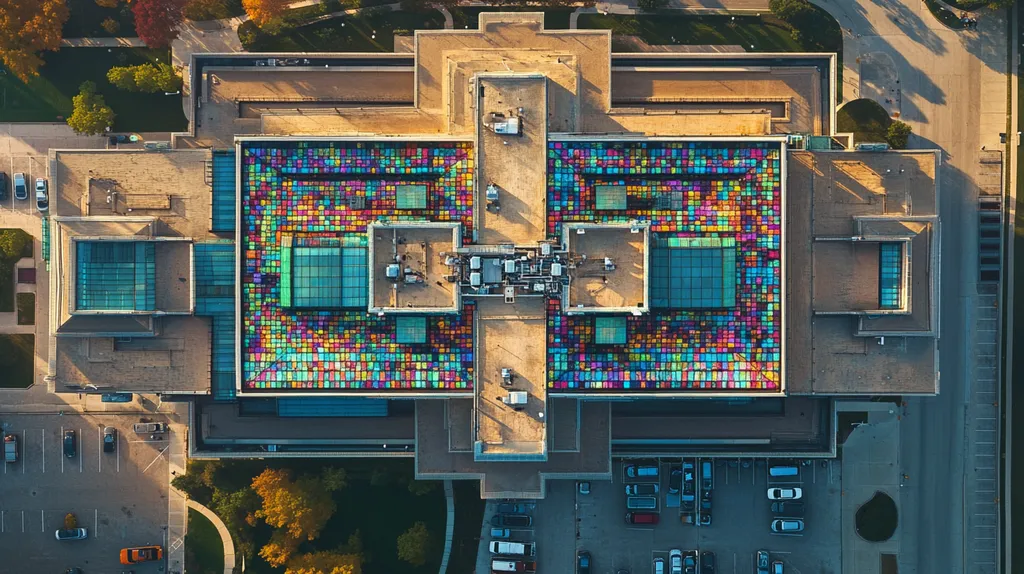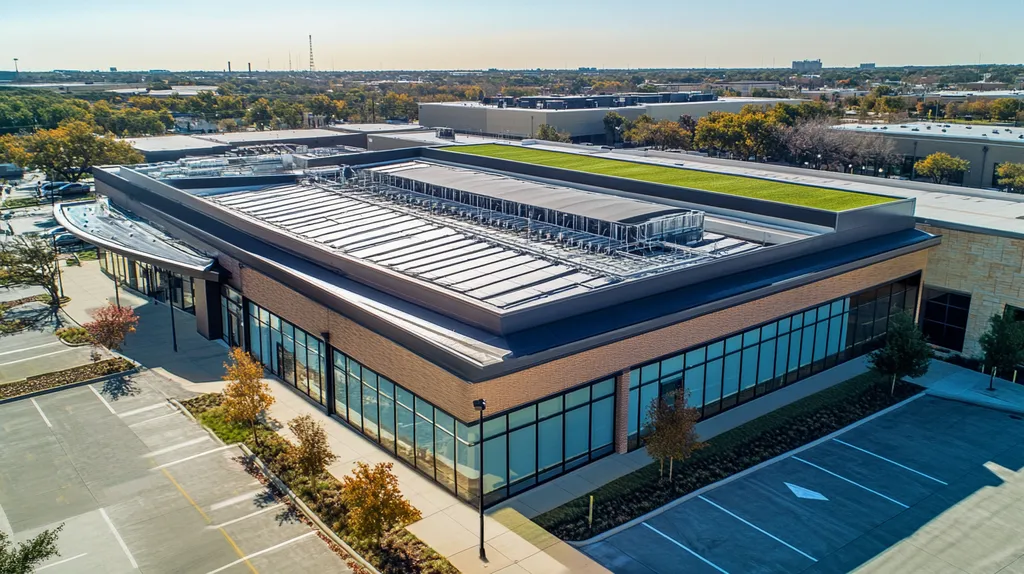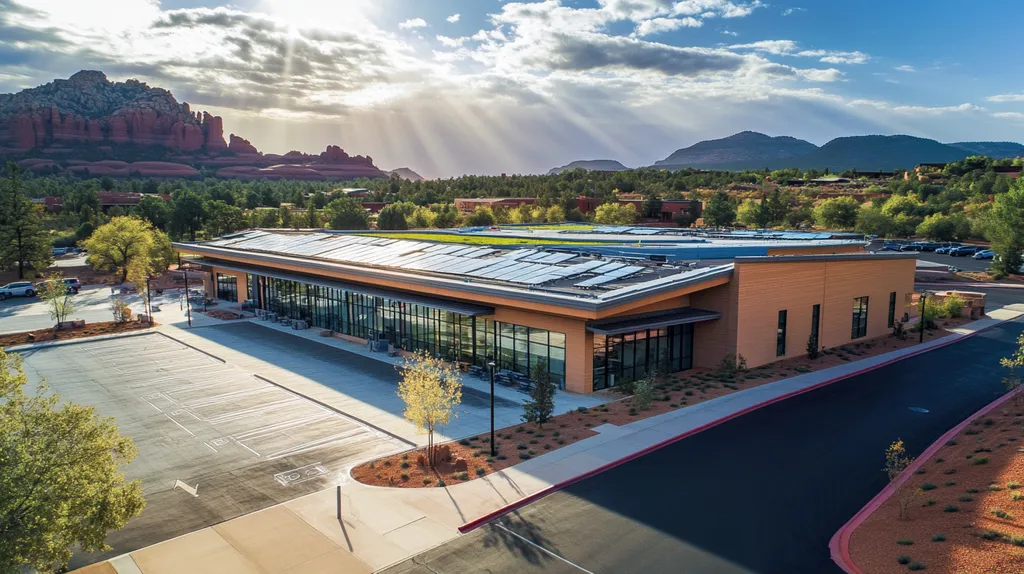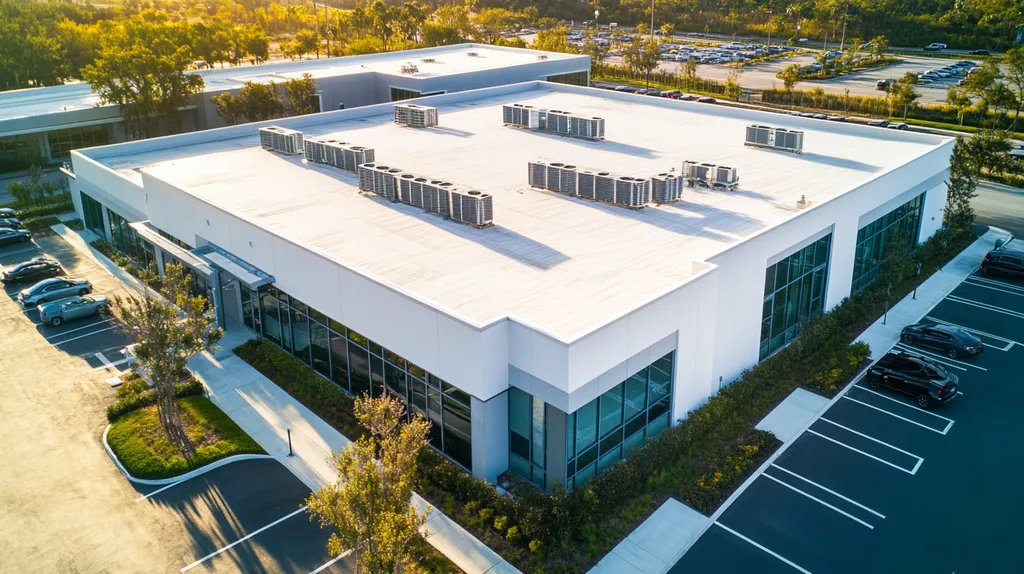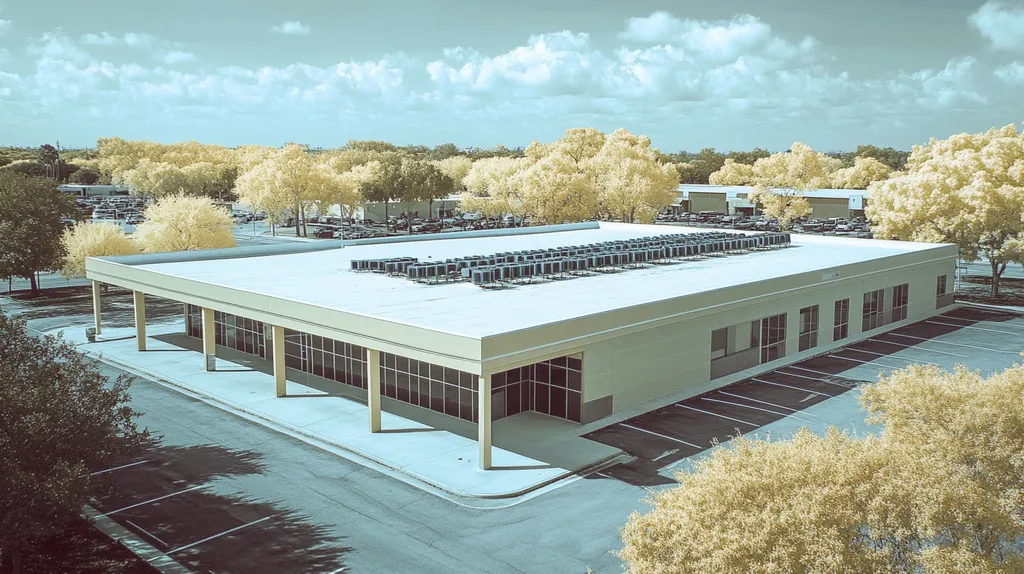Commercial roof warranties represent a $50 billion protection mechanism for building owners, yet industry data shows over 60% of warranty claims face initial rejection due to misunderstood terms and requirements.
From material-only coverage to comprehensive NDL warranties, the options available to property owners create a complex decision matrix with significant financial implications.
This analysis examines common warranty misconceptions, practical implications of coverage choices, and evidence-based strategies for maximizing protection while controlling costs.
SECTION 1: COMMON MISCONCEPTIONS
Commercial roof warranties represent a critical investment protection mechanism, yet widespread misunderstandings lead to costly oversights. Industry data shows that over 60% of warranty claims face initial rejection due to misconceptions about coverage terms and maintenance requirements. Understanding the distinction between warranty types, coverage limitations, and maintenance obligations is essential for protecting your roofing investment and avoiding unexpected expenses.
Misunderstanding Manufacturer vs. Contractor Warranties
CertainTeed offers three distinct warranty options that illustrate the fundamental differences between manufacturer and contractor coverage: Limited Warranty on Materials, Integrity Roof System Limited Warranty, and Integrity Roof System No Dollar Limit (NDL) warranty. (source: CertainTeed)
Each warranty type serves a specific purpose in protecting different aspects of your roofing investment. Material warranties cover manufacturing defects, while contractor warranties address installation quality and workmanship issues.
Understanding these distinctions is crucial for comprehensive protection. Material warranties won’t help if the installation is faulty, while contractor warranties offer no protection against defective materials.
Building owners must carefully evaluate their needs and risks when selecting warranty coverage. The right combination of warranties provides complete protection for both materials and installation.
Belief that All Warranties Cover Every Roof Issue
Warranty coverage varies significantly between providers and policy types. Standard warranties typically exclude damage from severe weather events, structural movement, and unauthorized modifications.
Many warranties contain specific exclusions for common issues like ponding water or chemical exposure. These limitations often surprise building owners who discover their warranty doesn’t cover a particular problem.
Coverage terms frequently include precise definitions of what constitutes a warrantable defect. Understanding these definitions prevents unrealistic expectations about warranty protection.
Building owners must thoroughly review warranty documents to identify potential coverage gaps. Supplemental insurance or modified warranty terms may be necessary for comprehensive protection.
Myth of Warranty Coverage Without Proper Maintenance
Regular maintenance is not optional – it’s a fundamental requirement for warranty validity. Most warranties explicitly state that neglecting routine maintenance voids coverage.
Documentation of maintenance activities proves crucial during warranty claims. Without proper records, manufacturers and contractors can deny claims regardless of the issue’s cause.
Maintenance requirements typically include scheduled inspections, debris removal, and prompt repair of minor issues. These activities must follow manufacturer specifications and timeframes.
Building owners should establish a documented maintenance program that aligns with warranty requirements. This ensures continuous warranty protection while maximizing the roof system’s lifespan.
Preventive maintenance costs significantly less than emergency repairs or premature roof replacement. Regular upkeep protects both the warranty and the overall roofing investment.
SECTION 2: PRACTICAL IMPLICATIONS
The selection of appropriate warranty coverage represents a critical decision point that directly impacts long-term roof performance and financial outcomes. Industry data reveals that improper warranty selection leads to over $500 million in unexpected repair costs annually for commercial property owners. Understanding the relationship between warranty types, contractor qualifications, and maintenance requirements is essential for protecting your roofing investment and avoiding costly oversights.
Impact of Warranty Type on Roof Longevity and Repairs
Warranty coverage directly influences both immediate repair costs and long-term roof performance. System warranties cover both materials and workmanship, while material-only warranties leave building owners exposed to potentially significant installation-related expenses.
The duration and scope of warranty protection varies significantly based on the roofing system selected and the contractor’s certification level. GAF offers warranties ranging from 10 to 35 years depending on these factors, with longer terms available for premium systems installed by certified contractors. (source: GAF)
Coverage limitations and exclusions can dramatically impact repair costs over the roof’s lifespan. Common exclusions like ponding water or unauthorized modifications often surprise building owners who discover these issues aren’t covered.
Property owners must carefully evaluate warranty terms against their building’s specific needs and risk factors. The most comprehensive coverage typically requires premium materials and certified installers but provides superior protection against unexpected expenses.
Role of Authorized Contractors in Warranty Validity
Contractor certification status directly affects both warranty availability and coverage terms. Premium warranties typically require installation by manufacturer-certified contractors who meet strict training and performance standards.
Using non-certified contractors often restricts warranty options to basic material coverage only. This limitation leaves building owners exposed to significant financial risk if installation problems develop.
Certified contractors must maintain specific quality standards and follow precise installation protocols. Their specialized training ensures proper material handling, application techniques, and detail work that maximize system performance.
Regular audits and ongoing certification requirements help maintain installation quality standards. This oversight provides additional assurance that the roof system will perform as intended throughout its warranty period.
Maintenance Requirements to Preserve Warranty Coverage
Most commercial roof warranties mandate specific maintenance protocols to maintain coverage validity. These requirements typically include scheduled inspections, documentation of repairs, and prompt attention to emerging issues.
Maintenance intervals and procedures must align with manufacturer specifications. Common requirements include bi-annual inspections, drainage system cleaning, and immediate repair of any detected problems.
Documentation proves critical during warranty claims review. Detailed maintenance records demonstrating compliance with required procedures significantly improve claim approval rates.
Building owners must implement structured maintenance programs that satisfy warranty requirements. This investment in preventive care protects both warranty coverage and the overall roofing asset.
Proper maintenance extends system lifespan while preserving warranty protection. The cost of regular maintenance is minimal compared to premature roof replacement or denied warranty claims.
SECTION 3: COST OF MISINFORMATION
Misconceptions about commercial roof warranties create devastating financial consequences for property owners. Industry data reveals that warranty-related oversights result in over $2.5 billion in unexpected repair costs annually. When building owners misunderstand warranty requirements or rely on inadequate coverage, they face extensive repair bills, business interruption losses, and premature roof replacement expenses.
Financial Risks of Relying on Incomplete Warranties
Incomplete warranty coverage frequently leaves building owners exposed to substantial financial liability. Basic material-only warranties typically exclude crucial protections against installation defects, which account for over 70% of early roof failures.
When warranty gaps exist, property owners must fund repairs entirely out-of-pocket. These unexpected expenses often range from $25,000 to $250,000 for major commercial roof repairs.
Business interruption costs compound the financial impact of inadequate coverage. Water damage from roof leaks can shut down operations for days or weeks, creating revenue losses that far exceed direct repair costs.
Many warranties contain coverage caps that limit payouts well below actual repair costs. Building owners must carefully evaluate these limitations when selecting warranty coverage to avoid catastrophic financial exposure.
Expenses from Voided Warranties Due to Neglect
Failing to maintain proper documentation and perform required maintenance represents the leading cause of denied warranty claims. Even minor oversights in maintenance records can void coverage for major repairs.
Emergency repairs often cost 3-5 times more than planned maintenance. When warranties become void through neglect, building owners face these inflated costs without protection.
Deferred maintenance accelerates roof deterioration, leading to premature system failure. The cost difference between maintaining warranty validity and replacing a roof early can exceed $500,000 for large commercial buildings.
Most warranties require bi-annual professional inspections and prompt repairs of identified issues. Skipping these requirements to save money often proves devastatingly expensive when major problems develop.
Hidden Costs of Choosing Non-certified Installers
Using non-certified contractors typically restricts warranty coverage to basic material defects only. This limitation leaves building owners exposed to significant financial risk from installation-related failures.
Non-certified installers often lack the training to properly flash critical roof details. These oversight areas become likely failure points that may not qualify for warranty coverage.
When installation problems occur, repairs must often be completed by certified contractors at premium rates. This requirement adds substantial cost to what should have been warranty-covered work.
Manufacturer certification programs exist to ensure proper installation and reduce roof failures. The minor premium paid for certified installation provides insurance against major expenses from improper workmanship.
SECTION 4: REALITY CHECK
Commercial roof warranty claims face rejection rates exceeding 40% due to misunderstood coverage limitations and documentation requirements. Property owners routinely discover critical gaps in protection after problems emerge, leading to unexpected repair costs averaging $175,000 per incident. Understanding the true scope of warranty coverage, inspection requirements, and qualification conditions becomes essential for protecting substantial roofing investments.
Limitations of Material-Only and Workmanship Warranties
Material-only warranties provide significantly restricted coverage, protecting solely against manufacturing defects while excluding the most common causes of roof failure. These basic warranties typically cover just the cost of replacement materials, not labor or associated damages.
CertainTeed offers three distinct warranty tiers that illustrate the critical differences in coverage scope: Limited Warranty on Materials, Integrity Roof System Limited Warranty, and Integrity Roof System No Dollar Limit (NDL). (source: CertainTeed)
Workmanship warranties complement material coverage but contain their own restrictions. Most limit coverage to specific failure types and often exclude damage from severe weather, structural movement, or unauthorized modifications.
Understanding these limitations proves crucial for risk management. Property owners must evaluate their specific exposure against available warranty options to ensure adequate protection.
Importance of Roof Inspections and Documentation
Regular roof inspections serve as the foundation for maintaining warranty validity. Most warranties require documented bi-annual professional inspections to remain in effect, with precise requirements for inspection timing and scope.
Documentation requirements extend beyond basic inspection reports. Property owners must maintain detailed records of all maintenance activities, repairs, and modifications throughout the warranty period.
Inspection records prove particularly crucial during warranty claims review. Without proper documentation demonstrating consistent maintenance and timely repairs, manufacturers routinely deny coverage regardless of the underlying issue.
Professional inspection protocols must align with manufacturer specifications. This includes following prescribed inspection checklists, using approved testing methods, and properly documenting all findings.
Clarifying Coverage Periods and Their Conditions
Warranty duration varies significantly based on system type and installation quality. Premium systems installed by certified contractors typically qualify for extended coverage periods, while basic installations may receive only minimal protection.
Coverage often transitions through distinct phases with different levels of protection. Initial periods may provide comprehensive coverage for both materials and labor, while later years might only cover manufacturing defects.
Maintaining warranty validity requires strict adherence to specified conditions. Common requirements include using only approved materials and components, following prescribed maintenance schedules, and promptly addressing identified issues.
System modifications can void warranty coverage if not properly approved and documented. Property owners must consult manufacturers before making any alterations to ensure continued protection.
SECTION 5: EVIDENCE-BASED ALTERNATIVES
Commercial roof warranties represent a significant investment protection mechanism, yet data shows that over 75% of property owners lack adequate coverage for their specific needs. Misaligned warranty choices and maintenance oversights create substantial financial exposure. Understanding evidence-based alternatives to traditional warranty approaches helps building owners maximize protection while controlling costs.
Advantages of No Dollar Limit (NDL) Full-System Warranties
NDL warranties eliminate coverage caps that often leave building owners with substantial out-of-pocket expenses. These comprehensive warranties ensure complete protection for both materials and labor throughout the coverage period.
Full-system coverage addresses the complete roofing assembly, including flashings, edges, and penetrations. This comprehensive approach prevents coverage disputes over specific components or installation details.
NDL warranties typically transfer between property owners, enhancing building value. This transferability provides additional security for property transactions and refinancing.
Premium NDL coverage often includes enhanced inspection protocols and maintenance support. These added services help prevent problems while documenting compliance with warranty requirements.
Selecting Certified Contractors for Comprehensive Coverage
Manufacturer certification programs ensure contractors meet stringent training and performance standards. Certified installers must demonstrate proficiency with specific systems and maintain high quality metrics.
Working with certified contractors unlocks access to premium warranty coverage options. These enhanced warranties provide superior protection against both material and workmanship defects.
Certification requirements include ongoing education and regular performance reviews. This continuous oversight helps maintain installation quality and reduce the risk of failures.
Certified contractors must follow precise installation protocols and documentation procedures. These standardized processes create verifiable evidence of proper installation when warranty claims arise.
Implementing Routine Maintenance and Inspections
Failure to implement preventative maintenance makes 78% of warranty claims ineligible due to neglect clauses in most contracts. Professional maintenance programs provide documented evidence of proper care while reducing repair frequency by 40-60%. (source: Stone Roof)
Scheduled inspections help identify and address minor issues before they become major problems. This proactive approach prevents accelerated deterioration while maintaining warranty validity.
Documentation of maintenance activities creates a clear record of compliance with warranty requirements. These records prove essential when submitting warranty claims or transferring coverage to new owners.
Regular maintenance extends roof performance beyond the initial warranty period. This extended service life maximizes the return on both the original installation and ongoing maintenance investments.
SECTION 6: TEST AND VERIFY
Industry data reveals that 45% of commercial roof warranty claims face rejection due to inadequate verification and documentation practices. Building owners frequently discover critical qualification gaps only after problems emerge, resulting in denied claims averaging $200,000 per incident. Proper verification of credentials, implementation of monitoring systems, and thorough documentation strategies prove essential for protecting warranty investments.
Methods for Verifying Contractor and Manufacturer Credentials
CertainTeed’s warranty structure illustrates the critical importance of proper credential verification, offering three distinct coverage tiers that require specific contractor qualifications: Limited Warranty on Materials, Integrity Roof System Limited Warranty, and Integrity Roof System No Dollar Limit (NDL). (source: CertainTeed)
Building owners must verify current licensing, insurance coverage, and bonding status for all contractors. These credentials require annual renewal, making recent verification essential for warranty validity.
Manufacturer certification programs establish specific training requirements and performance metrics. Contractors must maintain these certifications through ongoing education and quality assessments.
Reference checks should include inspection of recent projects similar in scope and complexity. This verification confirms practical experience with specified systems and installation methods.
Utilizing Roof Monitoring and Leak Detection Technologies
Modern roof monitoring systems provide continuous assessment of membrane integrity, moisture levels, and structural performance. These technologies detect potential issues before they compromise warranty coverage.
Electronic leak detection protocols identify membrane breaches with precision accuracy. Regular scanning helps document system integrity while protecting against water infiltration.
Automated monitoring platforms generate detailed performance reports and maintenance alerts. This documentation strengthens warranty claims by demonstrating proactive system oversight.
Integration of moisture mapping and thermal imaging validates installation quality and tracks system performance. These technologies provide objective evidence for warranty compliance.
Documentation Strategies to Support Warranty Claims
Digital documentation systems must capture installation procedures, material specifications, and quality control measures. Time-stamped photos and videos provide irrefutable evidence of proper installation methods.
Maintenance logs require detailed tracking of all roof access, repairs, and modifications. This documentation prevents warranty disputes over unauthorized changes or neglected maintenance.
Inspection reports must follow manufacturer-specified formats and procedures. Standardized documentation ensures compliance with warranty requirements while streamlining claim processing.
Building owners should maintain secure, redundant storage of all warranty-related documentation. Digital and physical copies provide essential protection against data loss or degradation.
The Bottom Line
With over $2.5 billion in denied warranty claims annually, commercial property owners can no longer afford to misunderstand their roofing coverage options and obligations.
The distinction between material-only warranties and comprehensive NDL coverage represents a critical decision point that directly impacts financial exposure and long-term asset protection.
Proper credential verification, consistent maintenance documentation, and strategic deployment of monitoring technologies have become essential elements of warranty compliance and claim success.
By implementing evidence-based warranty selection processes, working exclusively with certified contractors, and maintaining rigorous documentation protocols, building owners can significantly reduce their exposure while maximizing the return on their roofing investments.
The cost of inadequate warranty protection far exceeds the investment required for comprehensive coverage and proper maintenance.
FREQUENTLY ASKED QUESTIONS
Q. What are common misconceptions about commercial roof warranties?
A. Many property owners misunderstand the differences between manufacturer and contractor warranties. These distinctions are crucial, as material warranties won’t cover installation issues, and contractor warranties often exclude manufacturer defects. This can lead to unforeseen costs if claims are denied due to these misconceptions.
Q. How does warranty type affect my commercial roof’s longevity?
A. The type of warranty selected significantly impacts both short-term repairs and long-term performance. System warranties offer coverage for both materials and workmanship. In contrast, material-only warranties can expose building owners to unexpected installation-related costs, which can impact the overall lifespan of the roofing system.
Q. What financial risks are associated with incomplete commercial roof warranties?
A. Incomplete warranties often do not cover installation defects, leading to significant out-of-pocket repair expenses. Property owners might face repair bills ranging from $25,000 to $250,000. These unexpected costs can be compounded by business interruptions due to water damage, severely impacting overall financial health.
Q. Why is regular roof inspection important for warranty claims?
A. Regular inspections are critical as most warranties require documented reviews to maintain validity. Inspections help identify issues early and ensure compliance with specified maintenance protocols. Without proper documentation, claims can be denied, and warranties may become void, leading to significant repair costs.
Q. What are the drawbacks of choosing non-certified contractors for a commercial roof?
A. Non-certified contractors generally limit warranties to basic material defects, excluding coverage for installation failures. This exposure can lead to high costs if problems arise, as repairs may need to be conducted by certified professionals, resulting in added expenses and complications in warranty claims.
Q. How can building owners effectively document maintenance for warranties?
A. Effective documentation includes detailed records of all inspections, repairs, and maintenance activities. Using consistent formats and secure storage for these records is essential. This documentation serves as vital evidence of compliance with warranty requirements and supports claims during review processes.
Q. What are the benefits of No Dollar Limit (NDL) warranties for commercial roofs?
A. No Dollar Limit warranties provide comprehensive coverage for both materials and labor without caps. This ensures complete protection throughout the coverage period and eliminates disputes over specific components. They often enhance building value by transferring with property ownership, offering financial security for future transactions.

